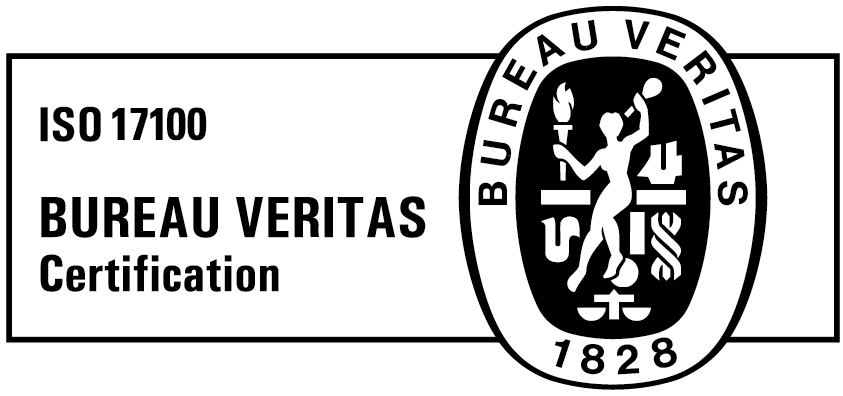Translation technology has come incredibly far since the 1950s when machine translation (MT) rolled out in practical terms. In theory, MT has been around since the 17th century.
Unfortunately, translation technology still has a bad reputation thanks to a certain popular search engine’s translation feature (which has greatly improved since).
Now translation technology has advanced so much that it has become portable and universally accessible, growing in complexity by the day. In-ear translators, portable devices that can read signs, and translation platforms with the ability to translate large documents at least four times faster are the norm.
Here are some examples of translation technology and how far we’ve come.
A Brief History of Translation Technology
Before diving into current translation technology, here’s a brief overview of how far we have come.

Machine Translation
Machine Translation dates to the 1950s (with it dating back in theory to the 17th century).
In 1954, Georgetown University and IBM experimented with machine translation. It resulted in a machine translating over 60 sentences from Russian to English.
As a pioneering experiment, much funding poured in, but translation technology would only see growth in the 1980s.
Statistical Translation
By the 1980s, translation technology saw much progress. With the power of computer technology, automated translation was possible. Statistical machine translation used the analysis of bilingual texts to automate translation. But the results were far from perfect. The translations were unnatural sounding and riddled with errors.
Neural Translation
Fast forward several years…
Translation technology greatly advanced with neural machine translation. Through deep learning and artificial neural networks, machine translation has become increasingly accurate and kickstarted a renewed interest in translation technology.
Although we aren’t yet at the place where machine translation will replace human translators, it certainly has grown immensely and is a great tool for translators to use.
Learn more about AI, Machine Learning, and Deep Learning here.
Translation Technology Today
Translation technology has developed exponentially since the Georgetown-IBM experiments in the 50s. Now portable translators and translation platforms are increasingly revolutionizing the industry.
In-Ear Translation Technology
A fascinating translation technology includes in-ear translators.
These devices can translate in real-time, or very close to real-time and are relatively simple.
Examples include WT2 Language Translator and Mymanu CLIK S.

The WT2 comes with two earpieces. One for you and the other for the person you want to communicate with in another language. These earpieces connect to your phone (you don’t need data to use them). As you speak, what you are saying is translated in real-time. The WT2 can translate into 40 languages and recognizes over 93 accents. It’s not a bad example of how far translation technology has come, as it has a reported 95% accuracy rate.
Mymanu CLIK S can translate into over 37 languages almost immediately (usually two sentences behind). The earpieces are popular in the UK, the US, and Asia. Mymanu CLIK S can work offline too.
Pocket Translation Technology

Translation technology makes it possible for you to carry an “interpreter” in your pocket.
For example, ili is an instant pocket translator. English-speaking travelers use it to communicate when touring the globe. The only problem is that ili only translates one way from English into another language and won’t be able to translate from this language to English.
However, it is useful to communicate the basics when traveling.
Another handheld translator is Pocketalk. It translates into 74 languages with a range of dialects. What makes it unique is that it also translates slang, idioms, and even profanity. Pocketalk does require an internet connection to work.
Lincom is a two-way pocket translator that works in 138 languages. It has a camera that translates signs, menus, notices, and written documents. It shows translations on screen and says it aloud. All of which makes it a helpful gadget to pack with you when traveling. Most of the features require an internet connection though.
Translation Platforms
Arguably the best translation technology for businesses is the development of the translation platform.
Translation platforms, like Taia, allow businesses to upload their documents, select language pairs, what translation quality they need, and submit everything within minutes.

Translation platforms use AI-translation technology with human experts to deliver translations quickly, and accurately, making translation more affordable than ever before. There is no longer the need to search for qualified translators, send documents over email, have version control issues, and have back-and-forth communication before ordering a translation.
The translation platform ensures everything from requesting translations to billing, project status, and project management are in one place. Translation platforms like Taia make everything that traditionally made the translation process difficult and frustrating, easy.
There is no doubt that translation technology is constantly growing and expanding. Take how Generative Pre-trained Transformer 3 (GPT-3) has once again expanded capabilities (being able to generate original content without a human author). The expansion of translation technology is not something humans need to fear. Technology is here to help humans not replace them.
Taia Platform - Translation Technology Made Easy

If you need assistance with translation, the Taia platform is for you. Not only does the platform use advanced translation technology, but it also has the best translation experts.
The interface is easy to navigate and intuitive, pricing is upfront, and you are given control over translation from start to finish.
Taia is based in Europe but has native specialists based across the world. We specialize in translation and localization across all industries, continents, and into over 97 language pairs.
Sign up to our platform for free and start translating immediately, or book a demo with our team in your time zone.
Liked this content?
Get notified when we publish something similar.
* We don’t spam your email or share it with anyone!




